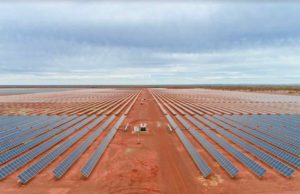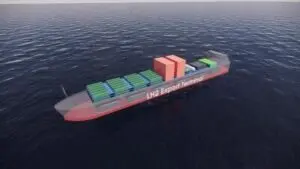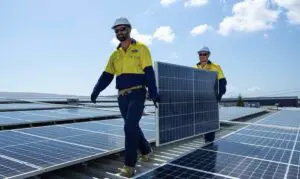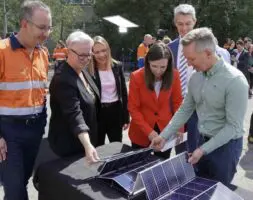Our recent Paper A review of the HumeLink Project Assessment Conclusions Report, Sep 2021 was the subject of a RenewEconomy article Snowy 2.0 hit by another blow out in costs, and consumers will foot the bill.
The main issues in the paper included the 250% blowout in estimated cost from $1.3bn to $3.3bn, the resulting 40% increase in NSW transmission tariffs, the net loss that will be incurred by the project (exceeding $4bn), and the refusal of Snowy Hydro to pay its fair share of connecting Snowy 2.0 to the grid.
That’s more than enough issues to spark the concerns of governments, consumers and the energy industry.
But the regulatory process surround the HumeLink transmission line warrants further examination, as it provides some salutary lessons for the development and approval process for future transmission projects. We’ve identified eleven lessons – there are no doubt many more.
Lesson 1: The underestimated costs need to be explained and understood
Staggeringly, HumeLink’s 250% cost increase would have been even worse had it not been for a change in design from two single-circuit 500 kV lines to a (cheaper) double-circuit 500 kV line.
According to the PACR, the estimated cost of two single-circuit lines would be $4.3bn.
Hence, the like-for-like cost increase for single-circuit lines is $3bn (315%) more than the $1.3bn estimate in the Project Assessment Draft Report (PADR), published just 18 months previous (in January 2020).
Inexplicably, the PACR provides no explanation. All that can be gleaned is that nearly one-third of the increase is due to biodiversity offset costs not having been included in the PADR.
Lesson 2: Insist on far more accurate cost estimates for PACRs
Alarmingly, the PACR estimate still has “a high degree of uncertainty, of -30%/+50%”. That is, HumeLink’s cost is expected to end up somewhere between $2.3bn and $5.0bn – a $2.7bn range!
The Regulatory Investment Test for Transmission (RIT-T) involves three stages, starting with a Project Specification Consultation Report (PSCR), then a PADR and finally a PACR, before submission to the Australian Energy Regulator (AER) for approval.
Surprisingly, the AER does not prescribe accuracy levels for cost estimates throughout the process.
Surely, a much greater degree of accuracy than -30%/+50% should be required by the final stage of the process and submission to AER. This should especially be the case for a massive project such as HumeLink, which is shaping up to be the most expensive transmission project in the history of the Australian electricity industry.
By contrast, the recently released PACR for Marinus Link has a claimed accuracy of -10%/+10%.
Lesson 3: Expect transmission costs to climb further
The substantial underestimation of HumeLink’s cost, together with other recent developments, indicate that even further increases in transmission costs are likely.
In April 2020 AEMO increased its “capital cost estimates [for transmission] by approximately 30%”. The estimated cost of EnergyConnect, the transmission line between NSW and South Australia, increased 50%, from $1.5bn (PACR) to $2.3bn, and only just scrapped through its AER approval on a marginal cost/benefit assessment.
With all eastern states embarking on multiple transmission augmentation projects after many decades of inactivity, the available design and construction resources in Australia are limited, leading to further cost pressures.
The other inherent difficulty in building transmission lines is (understandable) opposition from affected landowners and local communities. TransGrid is experiencing strident opposition to HumeLink and other proposed transmission projects in NSW.
Similarly, AusNet in Victoria. This is a major social issue, and cost, which hasn’t been fully factored into estimates.
It is also a factor for consideration by those advocating more transmission lines, particularly at this early stage of development of multiple Renewable Energy Zones throughout the NEM.
Lesson 4: Address the propensity to overbuild and underestimate the cost
The fundamental commercial driver for transmission companies is to maximise revenues through building more regulated assets. Hence, there is an inherent incentive to underestimate costs to get a project to the proposal stage.
History bears this out. We are unaware of any transmission project where the cost decreased after the initial estimate.
Naturally, a project develops momentum as it progresses, and it becomes more difficult to stop, even with the inevitability of escalating costs and decreasing (even negative) net benefits.
Estimated costs need far more scrutiny, right from the initial stages of a proposal, and some form of reprimand when shown to be understated.
Lesson 5: Clarify AEMO’s perceived endorsement
AEMO’s 2021 Transmission Cost Report includes HumeLink as a RIT-T project, as well as other transmission projects.
Those in favour of projects in the Report and in the Integrated System Plan (ISP) invariably suggest that AEMO’s inclusion of such projects amounts to an endorsement of their economic benefit.
However, AEMO’s ISP is a system-wide expansion study in which committed generation projects are taken as inputs.
This means that in the assessment of HumeLink, for example, since Snowy 2.0 is deemed to be committed, the ISP treats this as a sunk cost.
But of course Snowy 2.0 and HumeLink are intertwined complements. Like a train station and a train line, the one has much less value without the other. Treating one as “committed”, biases the decision to commit the other.
To address this, in evaluating the economic merit of HumeLink, it is therefore essential to include the cost of Snowy 2.0. AEMO does not do this – as explained Snowy 2.0 is treated as a committed project and so its costs are ignored in the ISP’s analysis of HumeLink.
This means that AEMO’s analysis can not conclude that HumeLink is an economically sensible transmission expansion, it can only conclude that having ignored the costs of Snowy 2.0, its model finds that HumeLink is necessary in order to not waste the storage potential of Snowy 2.0.
This fundamental modelling issue is not widely understood. It is important that it is, since the inclusion of projects such as HumeLink in AEMO’s ISP is treated by influential but distant actors – such as parliamentarians – as credible proof of endorsement.
Considering the importance of AEMO’s position on power system development, it is essential that AEMO states more clearly the basis upon which major augmentations such as HumeLink and Marinus Link are included in its development plans, and how the economic merit of such inclusions should be understood.
It is also noted that AEMO has not been able to comment publicly on HumeLink’s estimated cost, as TransGrid provided this information on a confidential basis.
TransGrid should not be ‘allowed’ to classify the HumeLink information as commercial-in-confidence – it appears that no other transmission provider applies such a caveat.
Lesson 6: Adopt double-circuit lines as the norm where two circuits are needed
In the past, TransGrid ‘justified’ two single-circuit lines compared to a double-circuit line to minimise the risk of simultaneous circuit outages from lightning strikes, bushfires, storms, tower collapse etc.
However, this has been shown to be an unnecessary expense, with double-circuit lines proving to be very reliable in even the most risk-prone areas.
Double-circuit lines should be the norm for future transmission augmentations where two circuits are needed, to minimise the cost and environmental and social impacts. It is even better if they can replace an existing single-circuit line.
Surprisingly, TransGrid is (still) proposing two new single-circuit 500 kV lines for the 180 km extension to connect the Central-West Orana REZ.
Lesson 7: Rigorously review the claimed benefits
Our quick analysis of the PACR identified a number of overstated benefits for HumeLink.
For example, the sensitivity scenarios are practically certain, the assumed operation of Snowy 2.0 is unrealistic (assuming operation of all six generators or pumps at 2,000 MW for 14 hours/day continuously for 25+ years), and the competition benefits appear to be questionable.
Even ignoring the inclusion of the cost of Snowy 2.0, the estimated benefits of HumeLink are less than its cost.
Also, it is noted that the estimated benefits are far less certain than the costs, as they are based on assumptions of the operation of the electricity market for the next 25 years – a truly heroic task in such a rapidly changing environment.
For example, who could have predicted the rapid changes in renewable generation and battery technology even 10 years ago; and who can predict the role of electric vehicle batteries and hydrogen in the next 10 years?
At the least the estimated benefits should be presented as a range, rather than a specific figure.
It is evident that the estimated benefits of new transmission connections are struggling to exceed the rapidly escalating costs, making a rigorous, properly peer reviewed analysis even more important.
Lesson 8: Don’t start building a power project until the transmission connection is determined (and approved)
Snowy Hydro started constructing Snowy 2.0 in February, 2019, more than two years before the transmission connection was designed and the ramifications were identified.
Construction of Australia’s largest ‘battery’ should not have been approved years before its transmission connection was finalised, particularly when it is located in the middle of a National Park hundreds of kilometres from the main grid and generation sources (to power its pumps).
By contrast, the final investment decision for the 250 MW Kidston pumped hydro project was delayed by some years until its financing and transmission connection were resolved. In this case the Queensland Government stepped in with $147 million for the transmission line.
Lesson 9: New power projects ought to pay their fair share of incurred transmission costs
HumeLink’s route, size, timing and cost have been determined by the need to connect Snowy 2.0. Also, to minimise its costs, Snowy Hydro determined that the HumeLink connection would be at a new substation rather than the more logical existing Lower Tumut Switching Station.
HumeLink would have been simpler, shorter, cheaper and have delivered a better network performance had it not been deviated (over 100 km) to connect Snowy 2.0. And there is still VNI-West to come, of similar size and cost, to enable Snowy 2.0 to be fully connected to Victoria.
The connection of Snowy 2.0 has incurred many billions of extra costs for HumeLink and VNI West, yet Snowy Hydro has vigorously asserted that their entire cost be borne by electricity consumers.
It is only reasonable for the proponent of a new power project to contribute its fair share of the costs of transmission connection.
Lesson 10: The AER must return deficient proposals back to the sender
The HumeLink PACR puts the AER in an extremely difficult position: HumeLink cannot deliver benefits greater than its costs when you properly account for the costs and the benefits. But without HumeLink, Snowy 2.0 will be stranded.
Exactly the same issue arises in Tasmania. A very great deal of investment in generation, hydro and pumped hydro will be needed to turn the Tasmanian power system into the “Battery of the Nation” and ensure that it can supply 1500 MW of additional firm capacity for long duration to the mainland via the “Marinus Link”. This power station investment has not been counted in the cost/benefit analysis of Marinus Link.
If it were, just as for Snowy 2.0, there is no way that it would be plausible to claim that benefits exceed costs and therefore customers should pay for the transmission connection.
If the regulatory process is to retain the confidence of consumers, the AER has to return both the HumeLink and Marinus applications to the senders and make clear that it will only review applications that appropriately count costs and benefits, and result in a plausible net benefit.
Lesson 11: Establish an independent planning review process
It is apparent that the planning of HumeLink has been flawed from the outset, having been dominated by Snowy 2.0’s connection rather than designed to meet the transmission needs of NSW.
There has been no holistic assessment made of the needs of NSW first, followed by the adjustments (and costs) necessary to accommodate Snowy 2.0.
The full range of options should have been assessed, and on a far broader basis than a simple comparison of cost/benefit estimates.
Putting the state planning function in the hands of the company that builds, owns and operates the network fails to account for conflicts of interest.
There is a need for an independent planning review process, possibly using the Victorian model as a starting point, but preferably on a national level ultimately, certainly for interconnectors.
Summary
There are many lessons from the HumeLink debacle.
The overall take-out is that transmission projects need far more scrutiny, far earlier in the development process. It is clear that a rigorous process would have identified HumeLink (and Snowy 2.0) and Marinus Link to be uneconomic as proposed, saving $billions for taxpayers and electricity consumers.
Professor Bruce Mountain is the Director of the Victoria Energy Policy Centre; Ted Woodley is a former Managing Director of PowerNet, GasNet and EnergyAustralia; Dr Hugh Outhred is Managing Director, Ipen Pty Ltd










